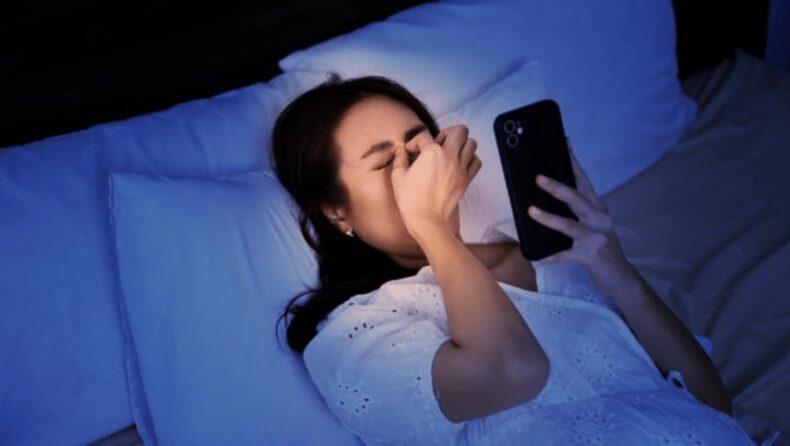We are all well aware of the negative impacts of technology on eyesight and the consequences of a device addiction. However, a lot of people underestimate these warnings and allow their addiction to negatively impact their health. A woman from Hyderabad had a similar habit of using her smartphone late at night.
She was diagnosed with Smartphone Vision Syndrome (SVS), and her everyday routine of browsing through social media at night in the dark nearly caused her to permanently lose her vision.

Highlights
A doctor’s analysis regarding this situation: –
Dr. Sudhir, a neurologist from Hyderabad, explained on Twitter how a 30-year-old woman’s vision was impaired as a result of her unhealthy habit of using her smartphone in the dark at night.
The doctor revealed in a Twitter thread that Manju, one of his patients, visited him with symptoms consisting of seeing floaters, bright flashes of light, dark zigzag patterns, and occasionally having trouble focusing and concentrating on objects. She was found to have been suffering from smartphone vision syndrome, which can trigger eye-related disorders including blindness, when she underwent a medical examination.

Her propensity to spend a lot of time on her phone in the dark, according to the doctor, is what caused her vision loss. She had been engaging in this heinous behavior on a regular basis for about a year and a half. “I reviewed her history.” Her symptoms started to develop when she quit her profession as a beautician in order to take care of her specially abled child. “After which, she picked up a new habit of browsing through her smartphone for several hours every day, including for more than two hours at night with the lights switched off,” Dr. Sudhir stated in his Twitter thread.
But after carefully observing her habit, the doctor offered her medical advice and instructed her to put a limit on her screen time. She was able to regain her vision by taking the medication as prescribed and also by avoiding staring at screens. Manju felt completely fine after her one-month evaluation. Her 18-month-old eyesight impairment was no longer existent. She was now able to see everything clearly and was unaffected by any floaters or light flashes. Similarly, she no longer experienced a brief loss of eyesight at night. The Twitter discussion continues to reveal more.
Manju received treatment at the right time, but it is alarming how many individuals are suffering from “digital vision syndrome,” “computer vision syndrome,” or “smartphone vision syndrome.” The fact that this illness may even result in partial or complete vision loss makes the situation even more worrisome. Even though a person can still be treated with medication and lifestyle changes, using a smartphone responsibly is still necessary.
The average smartphone consumption time in India has increased to 4.7 hours per day in 2021 from 4.5 hours in 2020 and 3.7 hours in 2019, according mobile analytics firm data.ai (formerly App Annie). Forget about the consequences of excessive screen time or the blue light from digital devices; studies show that many more individuals are using their smartphones in dimly lit environments. These factors not only have an impact on mental health but also raise the risk of loss in eyesight, which is regrettable.

Eyesights: Prevention is better than cure: –
While ignoring smartphones is nearly impossible, it is strongly advised to limit screen time and lead a healthy lifestyle. Even for the tech-savvy, technology itself will help you reduce your screen time. For instance, activating Zen mode will encourage you to stay away from your smartphone. You can decrease eye fatigue by turning on the blue light filter. Every 20 to 30 minutes, set a timer and take a break from the screen. Start working out and bring your smartwatch to use.
Dr. Sudhir suggests, “Avoid staring at digital device screens for extended periods of time, as this might lead to severe and crippling vision-related issues.” “When viewing a computer screen, take a 20-second break every 20 minutes to look at something 20 feet away (20-20-20 rule).”













